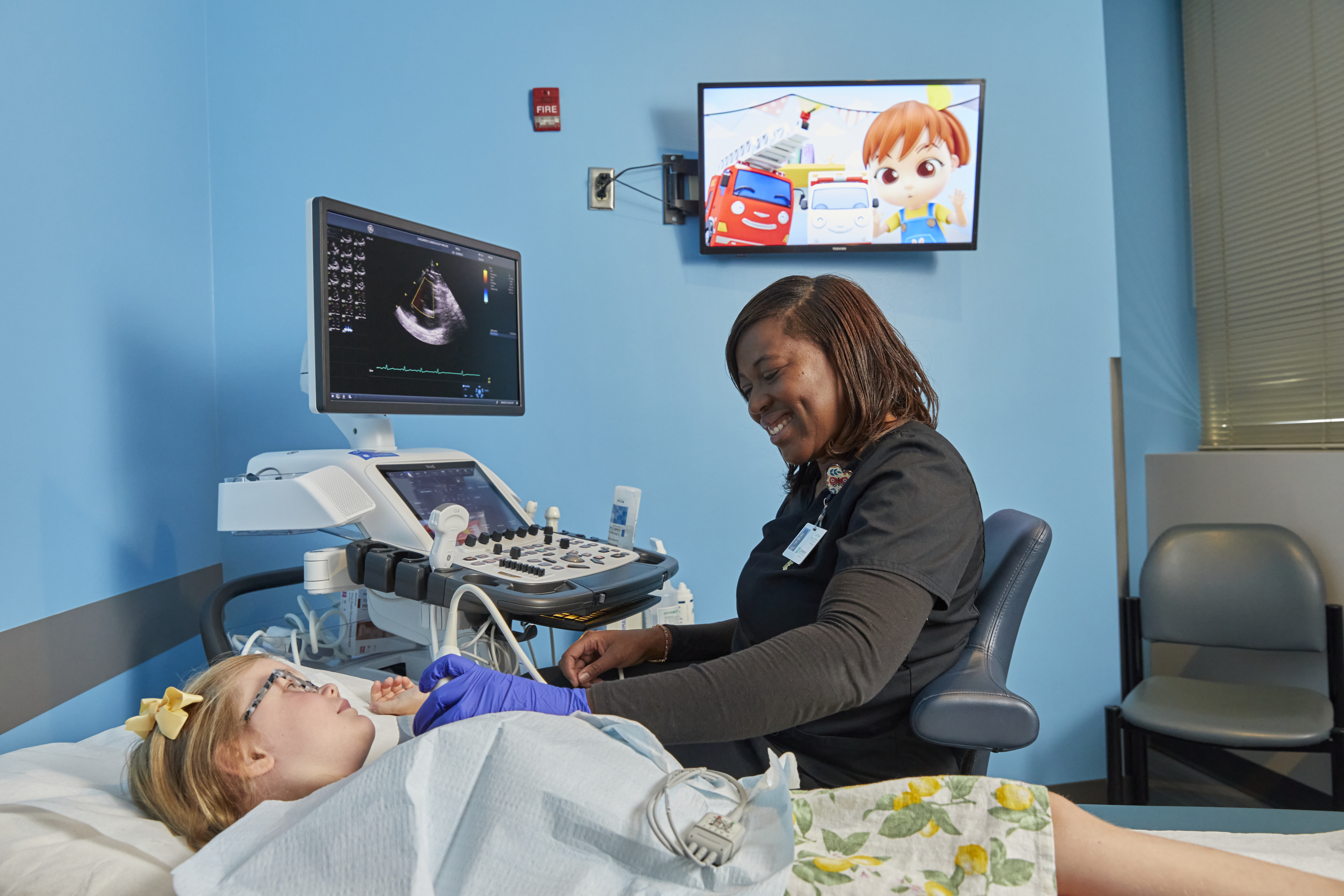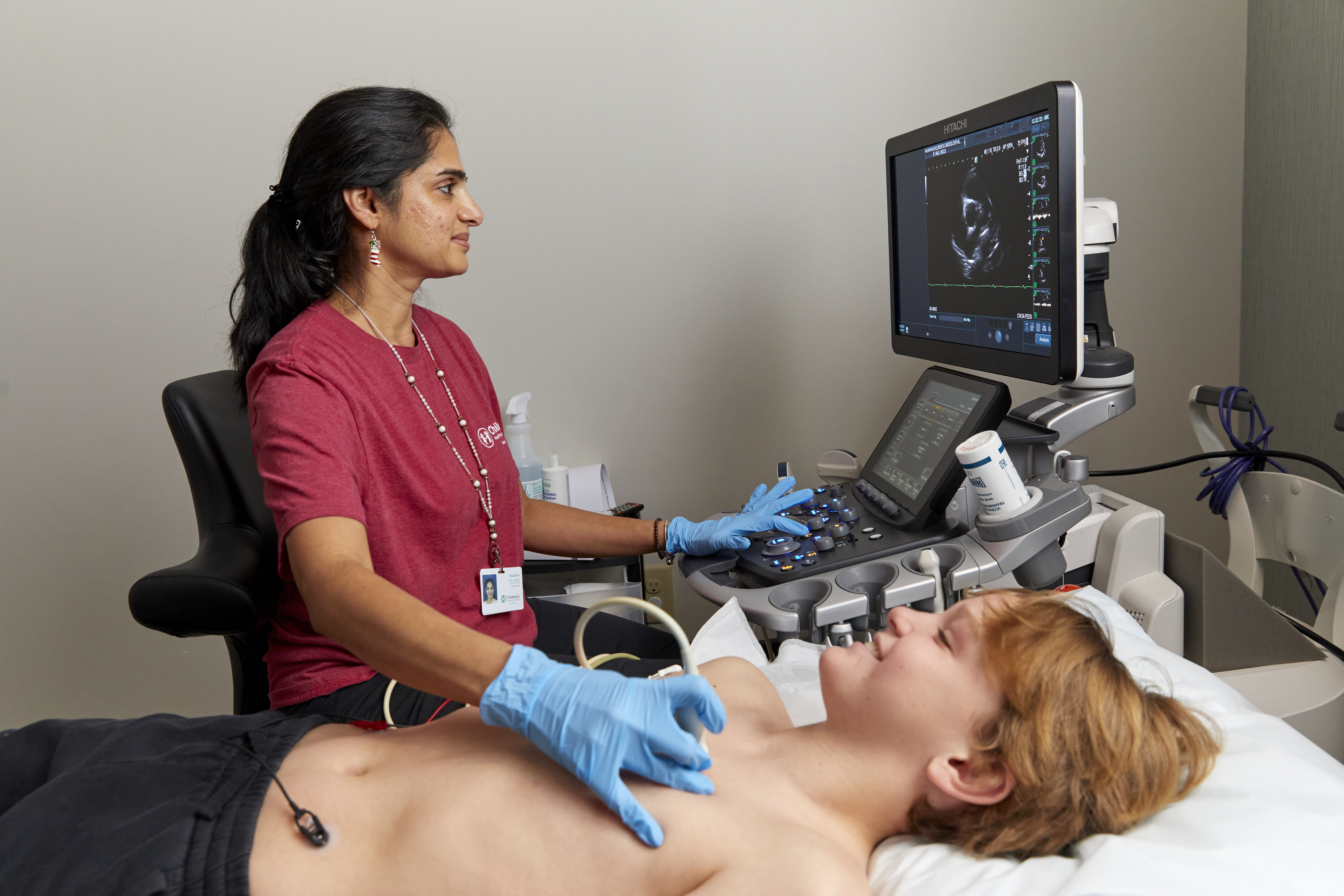Pediatric ECHOs and EKGs Reveal Information About the Heart

Two of the tools pediatric cardiologists have when they want to gather more information about a child’s heart include the echocardiogram (ECHO) and the electrocardiogram (EKG). Both are noninvasive, painless and quick ways to learn about the heart’s structure and electrical system. We’re here to help your child know what to expect at a pediatric ECHO or pediatric EKG appointment.
ECHO
We perform about 36,000 transthoracic ECHOs each year. A pediatric ECHO uses the same technology used to evaluate a baby’s health before birth and is similar to an X-ray, but without the radiation. A hand-held device called a transducer is placed on the child’s chest or on a pregnant woman’s belly and transmits high frequency sound waves, which bounce off the heart structures, producing images and sounds that can be used by doctors to detect heart abnormalities.
Children of any age can have a pediatric ECHO performed, and a study can take 30 to 60 minutes to complete, depending on the age of the patient and how comfortable they are in the echo room, said Wesley Blackwood, MD, pediatric cardiologist at Children’s Cardiology.
They do have to lie fairly still for the study,” Dr. Blackwood said. “We have ways to distract them, but the most effective soothers are their families, who can be with them throughout the test.”
Fetal echocardiography is a specialized, focused evaluation of the fetal heart in pregnant women. The structure of the fetal heart can best be seen at 18-24 weeks of pregnancy, and fetal ECHOs can be performed all the way up to delivery. Pregnant women may be referred by their obstetrician for a number of reasons such as a family history of heart problems or heart rhythm issues detected in the baby.
“We are focused on the heart while evaluating surrounding structures for signs of fetal distress,” Dr. Blackwood said. “ECHOs show us structural and functional issues and if there is fluid collecting around the heart. These are things that we can follow throughout pregnancy and after birth, and they help us anticipate support or intervention that may be needed.”
Electrocardiogram (EKG)
A pediatric EKG is a test that measures the electrical activity of the heart. With each beat, an electrical impulse travels through the heart, which causes the muscle to squeeze and pump blood from the heart. A normal heartbeat on an EKG will show the timing of the top and lower chambers.
The EKG is a very quick test. Putting the electrode leads on the skin of the chest, arms and legs correctly takes a few minutes, but it typically only takes a few seconds to acquire the electrical information needed.
“The EKG can tell us if there are early beats or if the heart is not communicating the way it should electrically,” Dr. Blackwood said.
Both ECHOs and EKGs are completely noninvasive and painless. These tests can be done in the doctor’s office, and the results are reviewed with families right away.
“We provide close to real-time interpretation, and we review the results with the family before the visit is even over,” Dr. Blackwood said. “It’s reassuring to families to get that immediate feedback.”
To learn more about pediatric ECHOs and pediatric EKGs:
My Child has CHD – What Happens Now
Children’s Patient and Family Education: Echocardiogram (ECHO)
The American Heart Association: Electrocardiogram (EKG)
For more information about Children’s Healthcare of Atlanta Cardiology and our pediatric cardiology specialists, click here.

